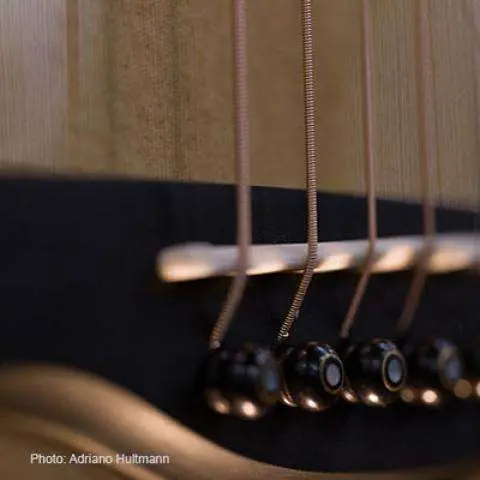
How to choose electro-acoustic guitar strings?
In every string instrument, including guitars, the strings are a very important issue. After all, they vibrate, producing a sound which then bounces off the body and is converted into a signal by the pickups in the case of electro-acoustic guitars. Most electro-acoustic guitars use piezoelectric pickups to detect string movement differently from magnetic pickups. The final effect is not affected by the magnetic properties of the strings. The materials used for the production of strings do not differ much in their magnetic properties, so even in the case of less frequently used magnetic pickups, this factor can be ignored in the comparisons of string types. So we will focus on the aspects of the strings that affect the sound of acoustic and electro-acoustic guitars equally. So all the information written here will apply to both acoustic and electro-acoustic guitars.
stuff Guitar strings are made of various materials. We will compare the most popular of them.
Brown (an alloy of mostly 80% copper and 20% zinc) allows you to achieve the brightest sound by far. These strings also have a lot of bottom end. We get a great combination of a crystal treble with strong bass, resulting in a strong acoustic sound.
Brown phosphorized (an alloy of copper and small amounts of tin and phosphorus) has a balanced sound. They have a warmer sound and strong bass while still maintaining a lot of clarity. They are characterized by a perfect tonal balance between all bands.
Silver-plated copper has a warm, even juicy sonic characteristics. Great for folk, jazz and even classical guitarists due to its noble sound. Also available in a version with added silk for an even warmer sound.
Wrap Round wound is by far the most popular type of wrapper used in acoustic and electro-acoustic guitars. Thanks to it, the sound becomes more selective and pure. You can also meet sometimes with a wrap type half wound (semi – round wound, semi – flat wound). Produces a more matte sound that is liked by jazz guitarists. Half wound strings produce less unwanted sounds when using the slide technique, and they use up both themselves and the guitar frets more slowly. Despite this, due to their selectivity, the round wound strings are undoubtedly the most frequently used strings in acoustic and electro-acoustic guitars.
A special protective wrapper In addition to the base wrap, the strings are sometimes provided with a protective wrap. It increases the price of the strings, giving them a much longer life in return, so the strings lose their initial sound much more slowly. A great proposition for those who want to change strings less frequently. The only thing that opposes them is that one-day-old strings without a protective sleeve sound better than one-month-old strings with a protective sleeve. When we go into the studio, it’s always a good idea to replace the strings with fresh ones. Professionals usually change the strings every concert.
It should be noted that apart from a special protective wrapper, there are also strings produced in extremely low temperatures. Such strings have an extended service life.
String size In general, the thicker the strings, the louder and more powerful they sound. In addition, they have a warmer sound, a longer sustain (greater sustain) and generate more higher harmonics. On the other hand, it is easier to play on thinner strings. It’s best to find your personal balance. The thickest strings are worth nothing if they cause us great difficulties. The best proposition for every beginner guitarist is to start the adventure with strings from the sizes marked “light” or “extra light” (the markings may differ from one manufacturer to another). Then gradually increase the thickness of the strings until we feel uncomfortable. The golden rule: nothing by force. Sets marked as “heavy” are already a difficult nut to crack for inexperienced hands. However, they are perfect if we want to tune our guitar by, for example, a whole tone. If you want to bend a lot, don’t hesitate to put on thinner strings as well. With thicker strings, the bends become very difficult or even impossible.
Summation It is worth experimenting with strings of different types and manufacturers. We will then have a comparison of which strings are most suitable for us. Let us not underestimate the importance of the strings for the sound of the instrument. The types of strings affect the sound as much as the types of wood used in guitars.
Comments
You can add that you should use the thickness of the strings suggested by the manufacturer, especially when it comes to acoustic guitars – the thicker the more demanding on the neck, the greater the tension force. Some guitars are simply not designed for thicker strings than ″ light ″. Or we will have to straighten the bar on a regular basis
Parsifal





